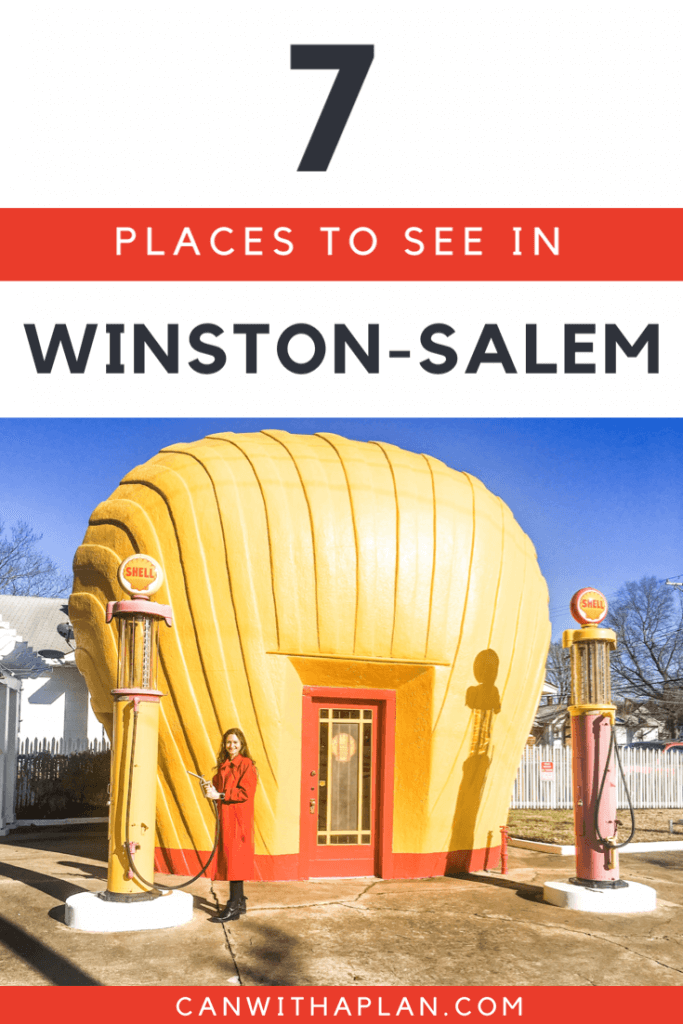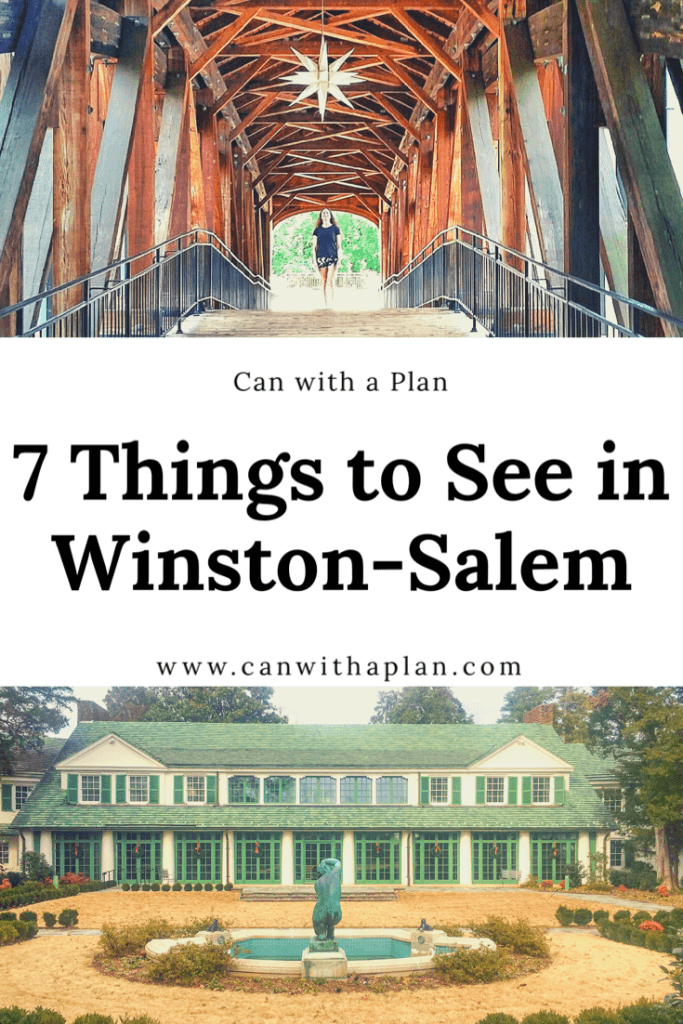Two cities in one, Winston-Salem was formed by the merger of the separate towns of Winston and Salem in 1913. Salem dates back to 1753 when the first Moravian missionaries from Germany arrived in the area. The name Salem comes from the Hebrew word, shalem, meaning “peaceful” or “complete.” Winston was established as the county seat in 1849 on land north of Salem and named after a local Revolutionary War hero. The city became one of the largest tobacco producers in the United States as the headquarters of R.J. Reynolds Tobacco Company.
1. Shell Station
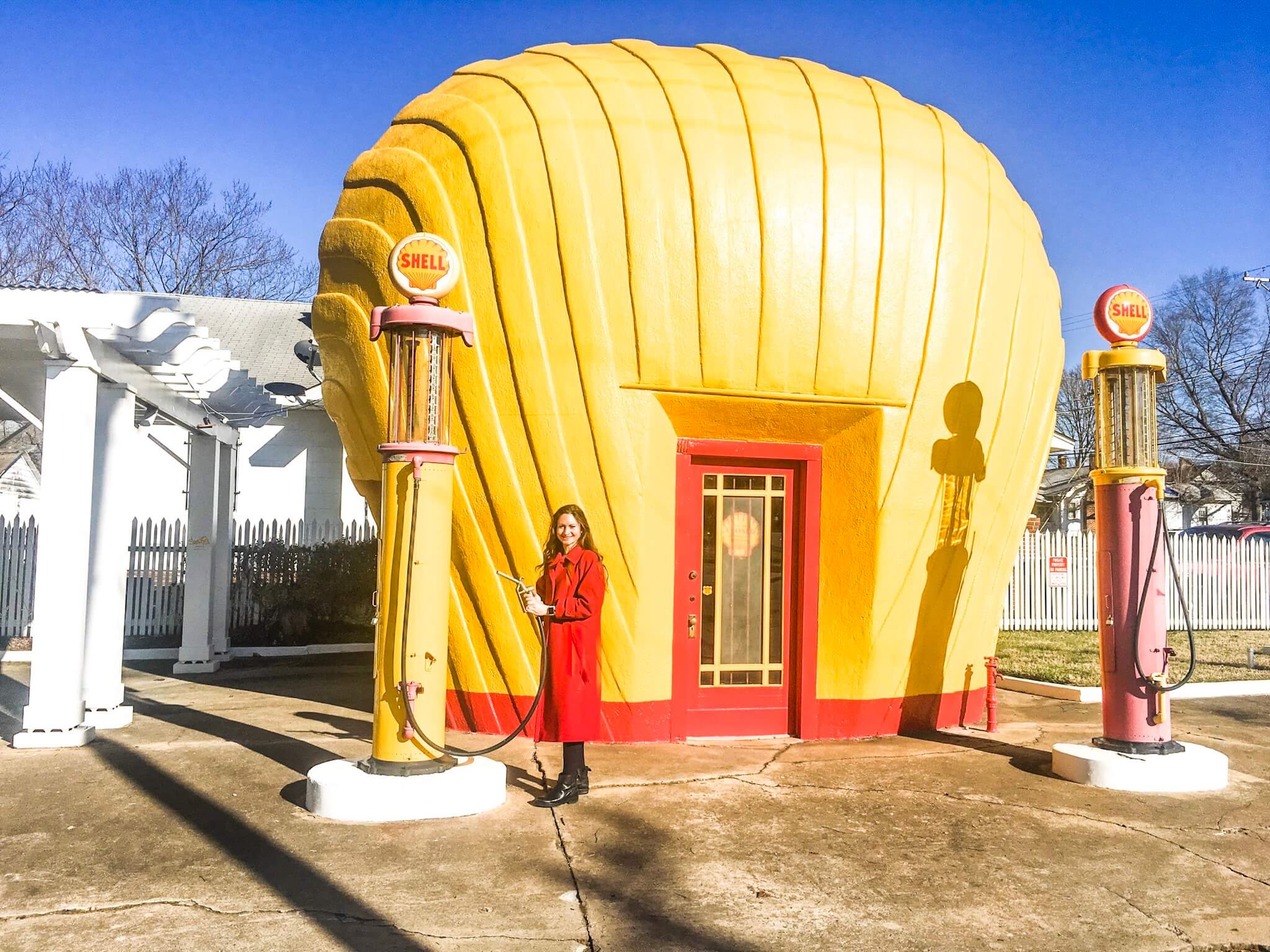
Eight shell-shaped service stations were built in the Winston-Salem area in 1930 as part of an effort to increase brand awareness and attract customers. This station at the corner of Sprague and Peachtree Streets is the only one that still stands. It was added to the National Register of Historic Places in 1976, and the exterior has been restored to its original condition by Preservation North Carolina. Inside the structure is a miniature museum displaying a collection of old newspaper clippings, photographs, and other Shell memorabilia.
2. Original Empire State Building
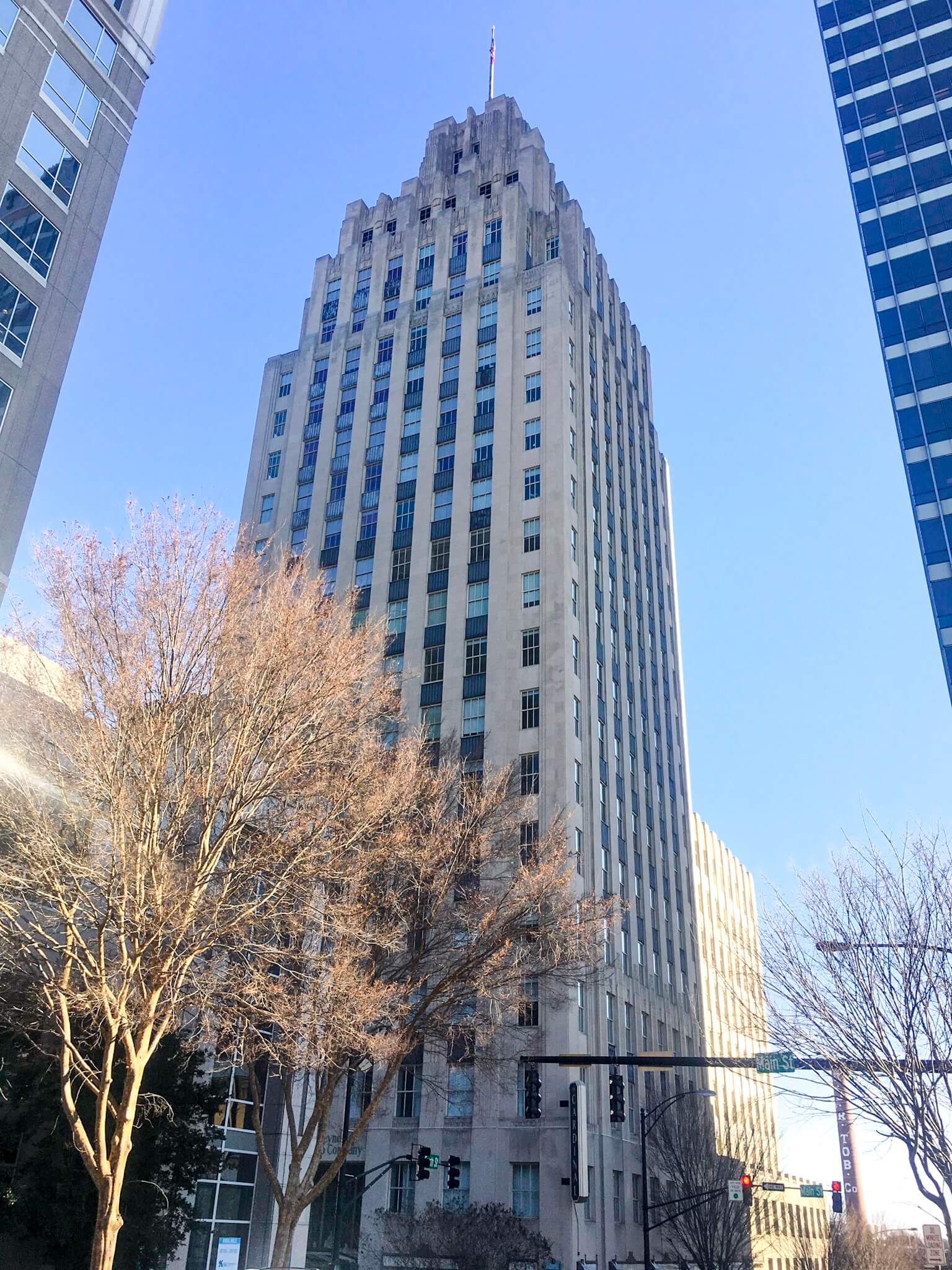
The Reynolds Building is a 21-story Art Deco skyscraper built in 1929 to serve as the headquarters for R. J. Reynolds Tobacco Company. The building’s design was used as the inspiration for the much larger Empire State Building completed two years later in New York City. Each year, the staff of the Empire State Building sends a Father’s Day card to the staff of the Reynolds Building.
3. Reynolda
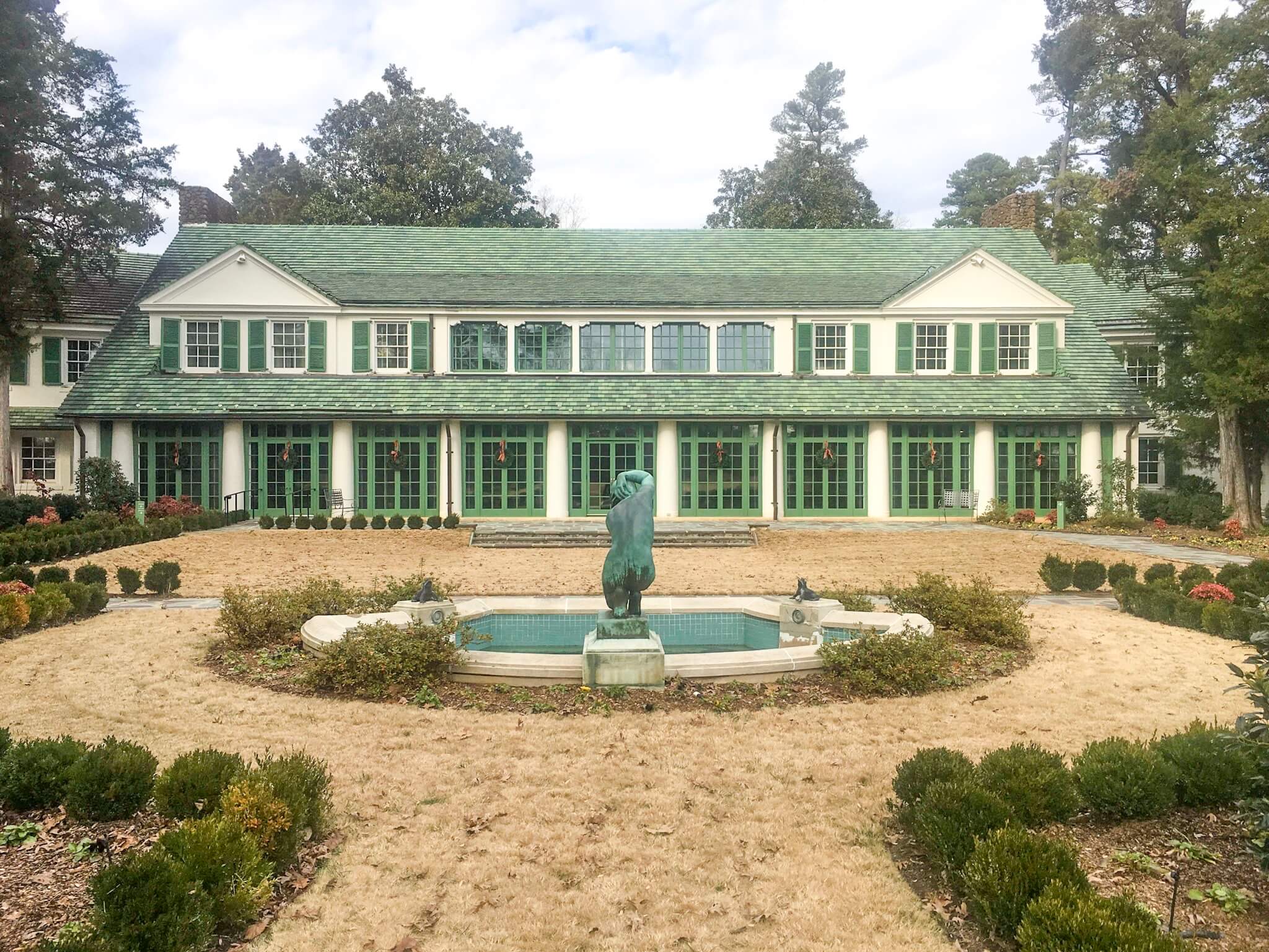
The Reynolda House was constructed from 1912 to 1917 and served as the home of the Reynolds family for several decades. In 1967 it was converted into a museum which now houses a collection of American paintings and sculptures ranging from the colonial period to the present. The museum also features original home furnishings from the period when the family lived there. The adjacent Reynolda Gardens consists of 125 acres of fields, woods, and walking trails and a 4-acre formal garden that includes a greenhouse. Reynolda Village is a shopping and dining complex in a collection of buildings that once functioned as the estate’s servants’ quarters and agricultural buildings.
4. Old Salem
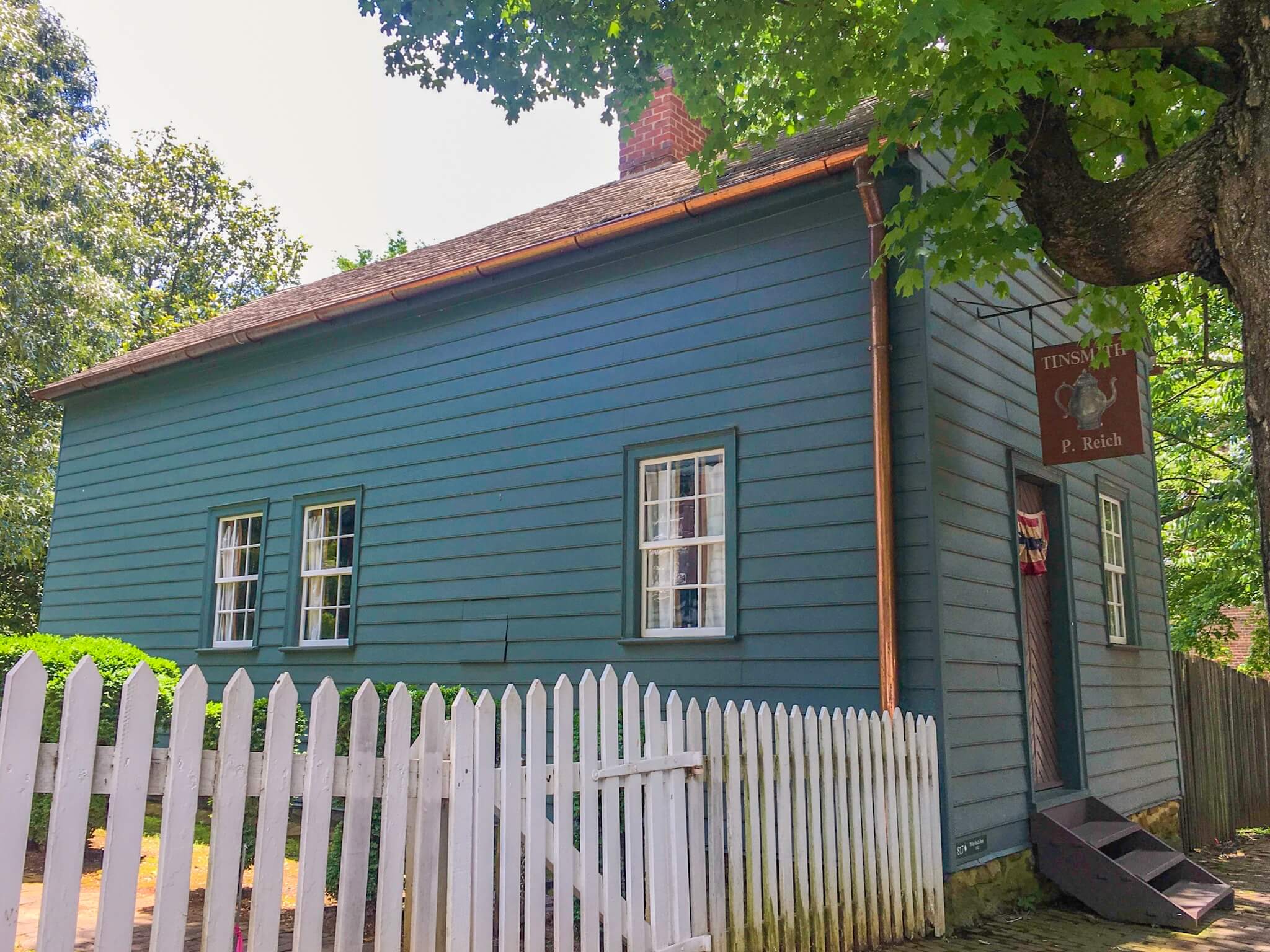
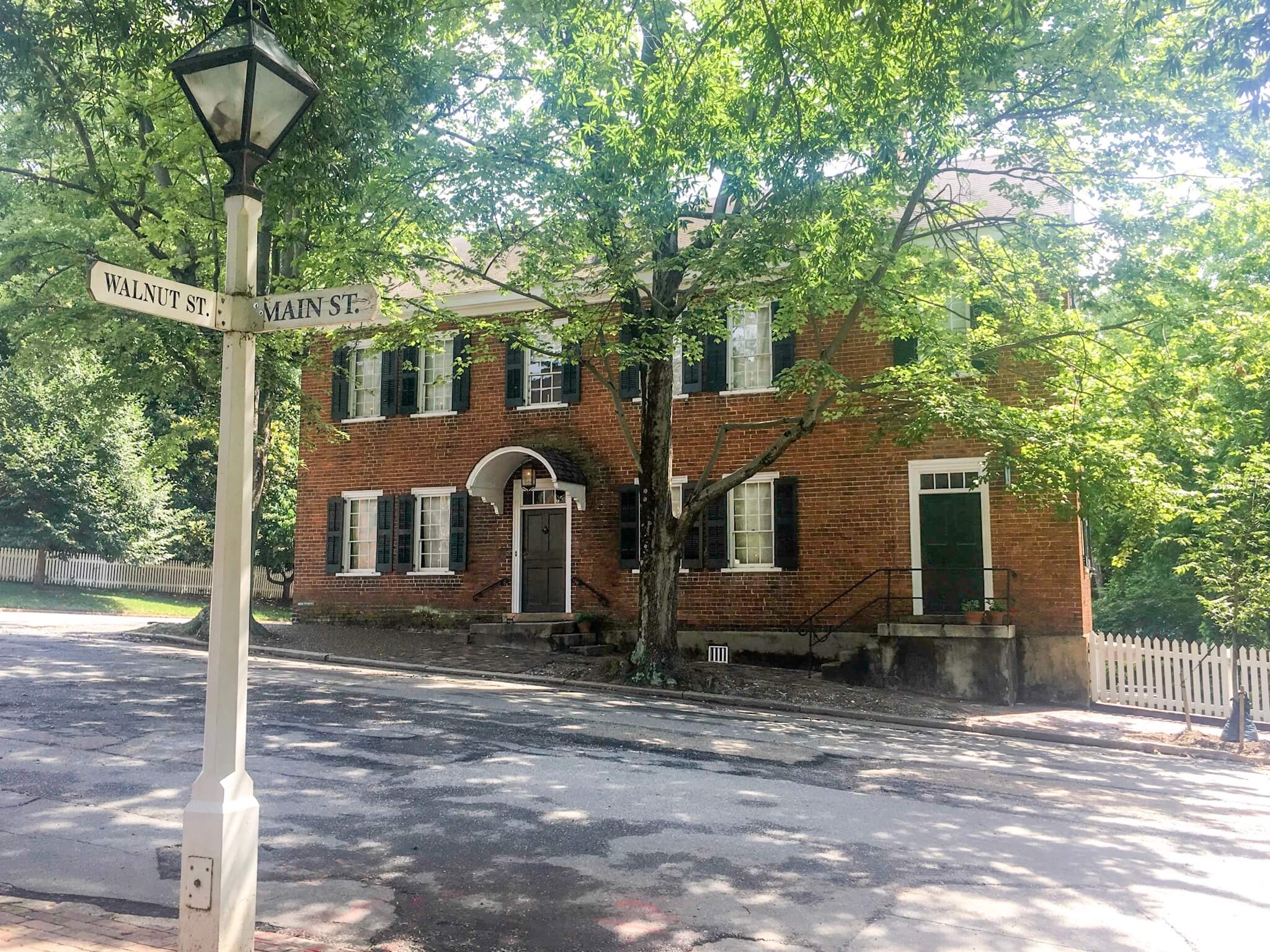
Old Salem was a typical Moravian settlement congregation, where the residents of the community were required to be members of the church as well. The town consisted of a central square surrounded by public buildings, which included the church, a Brethren’s House, and a Sisters’ House for the unmarried members of the congregation. Many of the original buildings in the settlement have been restored or rebuilt and are now part of Old Salem Museums & Gardens. Within these historic buildings, skilled craftsmen and interpreters present a view of Moravian life in the 18th and 19th centuries. The Salem Tavern, where George Washington spent two nights during his Southern Tour in 1791, offers traditional, farm-to-table Moravian dishes and candlelit dinners served by waitstaff in period costumes.
5. Heritage Bridge
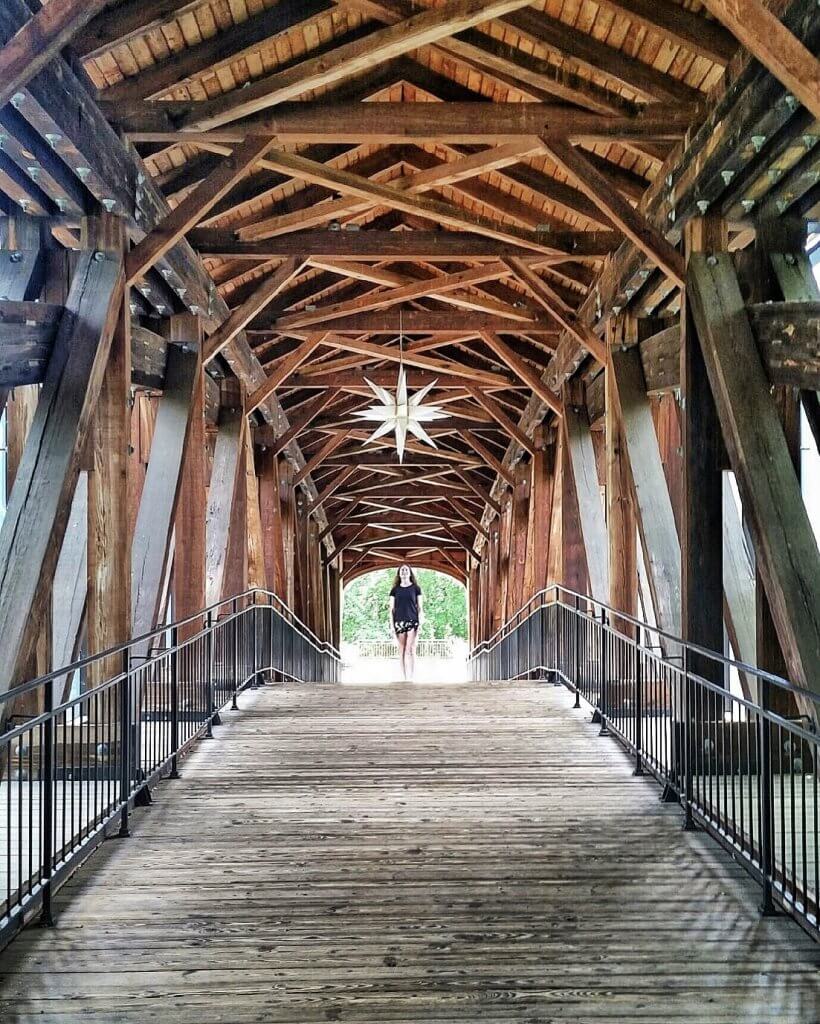
Old Salem Heritage Bridge was built in 1999, but modeled after covered bridges from the 19th century. A white Moravian star hangs in the center. The star was originally created at the Moravian Boys’ School in Germany as a geometry class project, but was later adopted by the Moravian Church as a Christmas symbol representing the Star of Bethlehem. The bridge has become a popular spot for photographs.
6. ARTivity on the Green
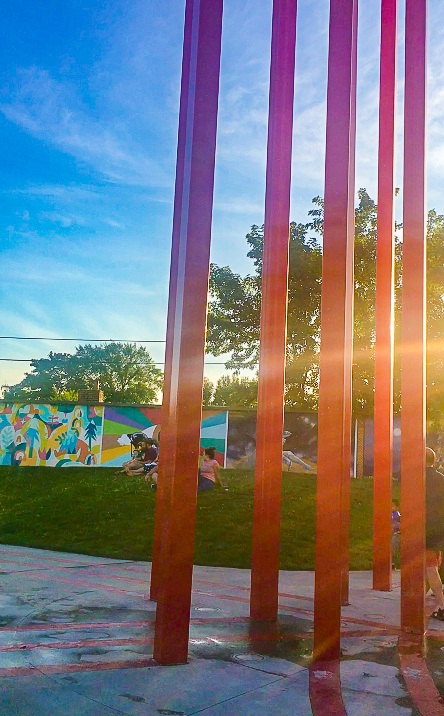
ARTivity on the Green is an art-themed, public park in downtown Winston-Salem. The bright red towers in the center mimic the R.J. Reynolds smokestacks to honor the city’s industrial past. During the warmer months, the towers emit a water mist resembling smoke every half hour. The art murals rotate annually as artists gather each spring to repaint the retaining wall along the edge of the park. Live concerts and other performances are held in the bandstand while the benches and rolling green hills provide a place for visitors to relax.
7. Downtown Arts District
The Downtown Arts District Association (DADA) between 5th, 7th and Trade Streets is a member-based neighborhood association that brings together working studios, galleries, shops, restaurants, and individual artists. You can attend their gallery hops on the first Friday of every month, or go on a self-guided walking tour of the public art throughout the neighborhood.
Some links in this article may be affiliate links, which means that if you purchase through them, I receive a small commission at no extra cost to you, and in many cases you receive a special discount. Thanks for your support!
Like this post? Pin it!
